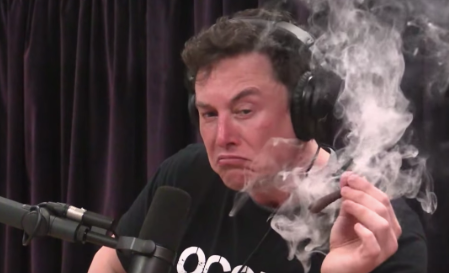Morgan Stanley Predicts Q3 Deliveries Miss For Tesla, Capitulates On Company’s Autonomous Timeline
Morgan Stanley’s Adam Jonas released a new note on Tesla Wednesday morning, with an “equal weight” rating on the company and a “cautious” outlook on the indsutry.
But the devil was in the details: Jonas believes the company is going to miss Q3 delivery estimates, margins will fall short of expectations and that the demand picture will be hindered by Tesla’s “old” and “overly engineered” vehicles. Jonas says he’s expecting a $600 million cash burn for the quarter.
He also capitulated that the timeline the company has set for its autonomous goals is wholly unrealistic.
Regarding the company upcoming report, Jonas writes:
We expect, as a result of these reports, that investors’ focus may now have mostly shifted to gross margins and cash flow leading into 3Q earnings. We are modeling 17.7% Auto gross margins on an ex-ZEV credit basis (50bps improvement from Q2) vs. Cons of 18.5%. We believe there will likely be some positive contribution to gross margin from software updates. Last quarter, they had a positive working cap impact as they sold more cars than they produced; we expect this to reverse this quarter and we model ~$600mm in cash burn.
The outlook on demand was also anything but optimistic, as Jonas called the Model S “old”, the Model X “overly engineered” and the Model 3 “trapped in a narrow sedan segment”:
We believe the debate is less a question of price point, but rather the segments which Tesla currently addresses in the US market. We believe that the S is old, the X is overly engineered and needs to be rethought, and the 3 may be trapped in a narrow sedan segment.
Regarding margins, Jonas expounded that he doesn’t see the scope for margin to meaningfully improve over time and he says that ZEV credit revenue will continue to be a “struggle”:
Tesla management has targeted a long term auto gross margin of 25% in a steady state (incl. reg/non-reg. ZEV credits), but we left 2Q with the feeling that there was an increased dependence on FSD and regulatory credits to bridge the gap between the 18.9% (incl. reg/non-reg. ZEV credits) gross margin they reported. While we have no gauge on what the current take rates are on FSD (we estimate they are in the 30% range); we don’t currently see scope for these to meaningfully improve over time.
We view pooling as a temporary solution to a permanent problem facing OEMs in Europe, and believe that ZEV credit revenue will struggle to remain a recurring source of revenue for Tesla over a multi-year scope.
On China, Jonas is also far less optimistic than the bull estimates:
We expect China to account for less than 200k units of deliveries to Tesla annually by 2022, which likely puts us in between where we believe bulls and bears stand. While we anticipate significant pent-up demand for Tesla’s locally produced vehicles in the PRC, longer- term we expect the Chinese EV market to remain highly competitive and see Tesla ́s China volume peaking at 254k units sold in 2024, before falling to the 160k to 170k range by 2030.
We continue to have concerns on the long-term viability of a US player in the Chinese EV market. Moreover, we believe investors must consider global trade and geopolitical risks as Tesla’s exposure to China increases. It remains to be seen who will arise as a formidable Tesla competitor in the Chinese market. Anecdotally, our China team believes that Tesla is thought to be the highest quality electric vehicle on the road there by a wide margin.
And finally, with regard to the company’s autonomous timeline, Jonas simply lays down his arms and gives up:
“We think that both bulls and bears alike believe that Tesla’s autonomy timeline is unrealistic,” he says.
We couldn’t agree with you more, Adam.
Tyler Durden
Wed, 10/02/2019 – 13:27
via ZeroHedge News https://ift.tt/2pi4IPU Tyler Durden

